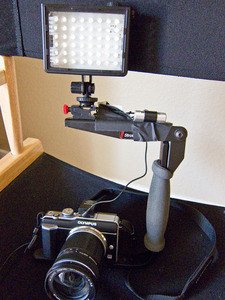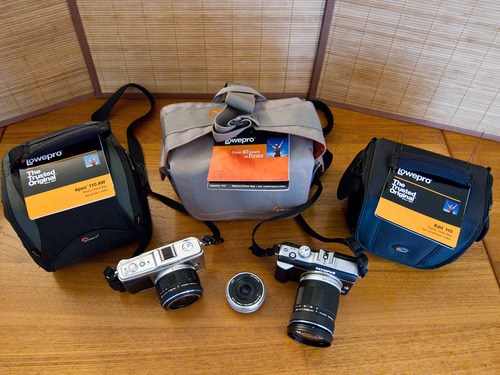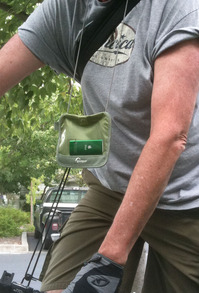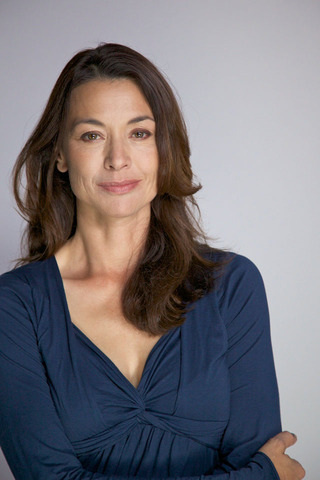Imagine a complete HD recording rig -- LED light, external mic, and camera -- that weighs only 2.8 pounds? I started with an Olympus PEN E-PL1 micro four thirds camera, then added an Olympus SEMA-1 Mic Adapter
for stereo audio recording. For lighting, I mounted a Litepanels LP Micro Compact LED Light Kit
on a bracket to augment the ambient light and to balance facial tones. The entire rig was held together with a Stroboframe Quick Flip 350 Flash Bracket
. This set up is so light that you can hold it with one hand, although I don't recommend that for recording.
You can watch this rig in action by checking out the movie trailer for Home Brew, a look at making beer at home with a very impressive stainless steel operation -- burners, pumps, fermentors, and more.
Super-light recording rig features an Olympus E-PL1, 14-150mm zoom, mic adapter with stereo mic taped to the bracket, and a Litepanels micro LED light for fill. Click on image for larger version.
Listen to the Podcast
You can also download the podcast here (30 minutes). Or better yet, subscribe to the podcast in iTunes. You can support this podcast by purchasing the TDS iPhone App for only $2.99 from the Apple App Store.
Monthly Photo Assignment
Torn is the July 2010 Photo Assignment. You can read more about how to submit on our Member Participation page. Deadline for entry is July 31, 2010.
The SizzlPix Pick of the Month for Photo Assignment 51 (Fire) is awarded to Dan Newsom for his non-literal interpretation of fire.
TDS Autumn 2010 Photography Workshop
The next TDS Photography Workshop will be Oct. 16-18, 2010. You can place your name on the reserve list now. Just drop me a line. We currently just have a couple spots open, so don't delay.
More Ways to Participate
Want to share photos and talk with other members in our virtual camera club? Check out our Flickr Public Group. It's a blast!
-
Podcast Sponsors
Red River Paper -- Try the $7.99 Sample Kit.
Make Your Photos Sizzle with Color! -- SizzlPix is like High Definition TV for your photography.
Technorati Tags: digital photography, podcast, technique, Technology, The Digital Story, tips


















